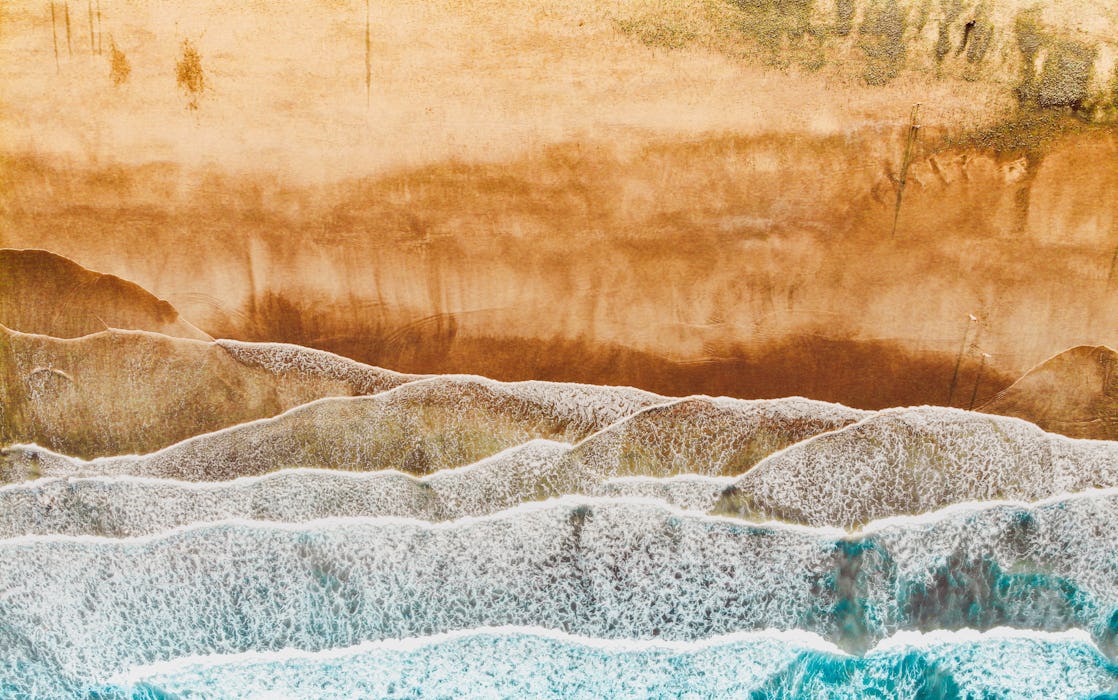Let us help you plan the perfect sailing trip
Provide your travel details, receive free offer and enjoy your holiday!
Nestled in the Atlantic Ocean, about 100 kilometres off the coast of Africa and a full 1,000 kilometres away from the Spanish mainland, Canary Islands are a mesmerising volcanic archipelago full of natural beauty.
Despite popular belief, the islands were not named after the birds, but it was the other way around. The archipelago derives its name from Latin, meaning the "Island of Dogs". It is believed that the original inhabitants of the island worshipped dogs many millennia ago. The islands' connection to dogs is proudly displayed on their coat-of-arms.
A truly unique region of Spain, tucked far away from its mainland, Canary Islands are a tropical oasis that almost touches the African continent. You will be welcomed by intoxicating lush forests, towering volcanoes and their surrounding lunar-like landscapes, stunning sandy coves and dunes.
Thanks to the beautiful natural surroundings and fine weather almost year-round, the Canary Islands are a popular tourist destination, with over 12 million visitors each year. Tenerife, Gran Canaria and Lanzarote are especially popular for their stunning beaches and unique natural attractions, namely Maspalomas in Gran Canaria, Teide National Park and Mount Teide in Tenerife.
Unique landscapes & stunning vistas
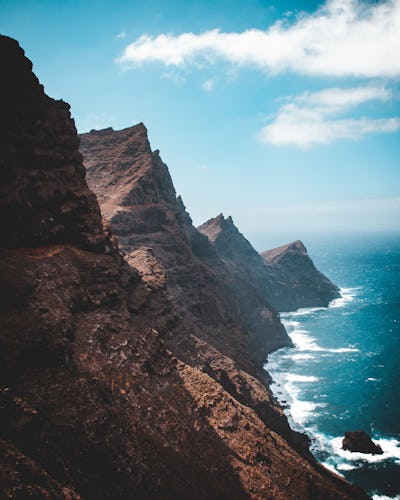
The Canary Islands were formed by volcanic eruptions which occurred millions of years ago. The oldest islands in the archipelago are Lanzarote and Fuerteventura, the easternmost islands.
Geographically, the Canaries consist of two groups:
The western group comprises Tenerife, Gran Canaria, La Palma, La Gomera, and Ferro, and the eastern group consists of Lanzarote and Fuerteventura islands, along with six smaller islets.
The whole archipelago is quite mountainous, with all of the western islands having their highest points above 1,200 metres. Teide Peak on Tenerife rises to 3,718 metres, making it the highest point on Spanish soil and the third-highest volcano in the world.
These islands offer a wide variety of beautiful vistas: You can marvel at the pine-forested peaks of Gran Canaria's mountainous interior, the roaring waterfalls of La Palma or the tropical vegetation of La Gomera's Garajonay National Park.
On the other hand, Tenerife offers Lunar-like landscapes with bare flatlands sprawling around the El Teide volcano. On Lanzarote, stunning lava fields await you while all sorts of cacti overrun Fuerteventura's endless plains.
Endless possibilities for fun and adventure
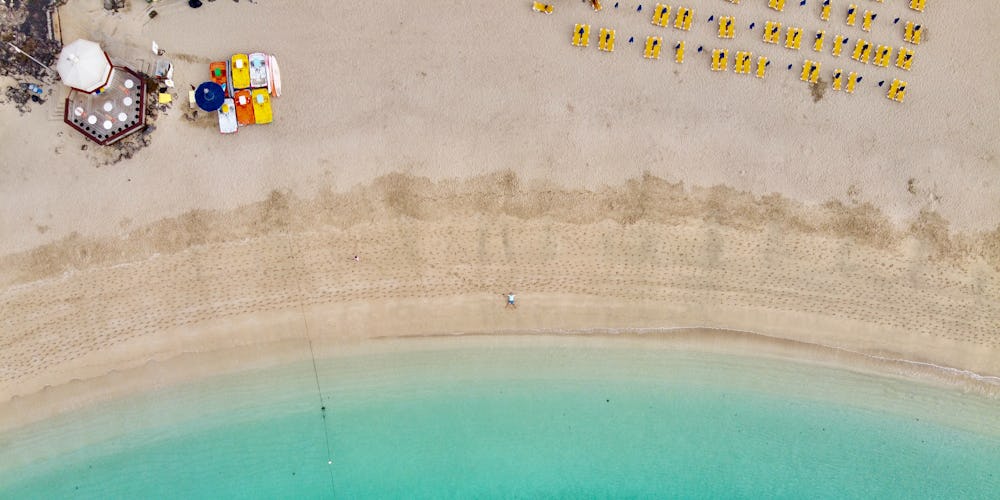
The diversity of the landscape makes outdoor pursuits a top priority when visiting the Canaries. Here you can go hiking on numerous nature trails, crisscrossing the islands, which will lead you from meandering coastal trails to more challenging mountain treks.
Those looking to enjoy the sea can go diving or snorkelling in blissfully warm waters inhabited by a rich ecosystem housing more than 350 different fish species.
Thrill-seekers will be happy to know that kitesurfing, windsurfing, surfing and paragliding are all popular activities on the Canary Islands, with ideal conditions to enjoy all of the mentioned activities.
At the end of your activity-filled day, head to one of numerous seaside resorts or beaches and kick back with a cocktail in your hand. From Fuerteventura and Gran Canaria's soft rolling dunes to Tenerife's sandy golden arcs and Isla Graciosa's wild coastline, you will be spoilt for choice.
Which island to visit?
The Canary Islands are simultaneously wonderfully unique and quintessentially Spanish. The archipelago's subtropical climate and volcanic origin create a unique microcosmos that does not feel European at all, while the cities and seaside villages are unmistakably Spanish.
Tenerife

Tenerife is the largest and most populous island, positioned centrally in the archipelago.
The island is dominated by unique volcanic landscapes, none more impressive than Mount Teide - the third-largest volcano in the world. Exploring the island's interior should include a visit to the Teide National Park (a UNESCO World Heritage site), La Orotava valley and Teno Alto. Then, to enjoy unparalleled vistas, be sure to take the cable car to the top of Mount Teide.
The southern coastline of the island is reserved for enjoying the beaches and the warm weather. Places like Las Vistas beach, Costa del Silencio, or the towering cliffs of Los Gigantes are perfect places to take in some sun and enjoy the warm waters.
Costa de Adeje is populated by luxury hotels, shops and restaurants, where one can enjoy all of the amenities of modern resorts.
The two main cities on Tenerife are Santa Cruz, the island's capital, and the neighbouring San Cristobal de La Laguna (or simply La Laguna). La Laguna is a quiet town, ideal for exploring by strolling around the town centre, where historic buildings built in a characteristic colonial style await you. In Santa Cruz, you will find a wide range of shops, cafes and restaurants. Interesting landmarks include Plaza de España, García Sanabria Park, the market of Nuestra Señora de Africa and the TEA art center.
Gran Canaria
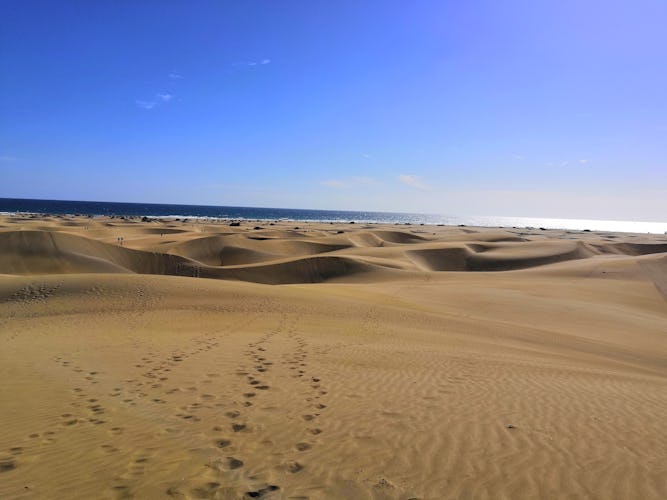
Like Tenerife, Gran Canaria is an island with two faces: the rugged and mountainous interior hides behind the soft and golden sand beaches.
More than 230 kilometres of coastline are home to some truly spectacular locations like the famous Playa del Inglés beach, the golden dunes at Maspalomas beach and the wide-spreading, untouched sands of Güi-Güi.
Gran Canaria is fully committed to all kinds of summer activities, inducing water sports. Here you can choose to go scuba diving, surfing, sailing and windsurfing. The island is considered among the best places in the world for windsurfing, with major international windsurfing competitions hosted here.
As you move away from the coastline, Gran Canaria's interior is a sight to behold. Nearly 50 per cent of the island's surface area has been declared as the UNESCO Biosphere Reserve. The island is beaming with life, animal and plant, with several nature reserves and parks scattered around. If you find yourself close to the southern end of the island, make sure to go whale and dolphin watching and observe these majestic creatures as they emerge off the coast.
The capital city of Las Palmas de Gran Canaria is a bustling city displaying a beautiful promenade with a winding sandy beach. Here you can take a break at one of the numerous cafes, enjoy some churros or even do a bit of casual shopping. Another good way to spend the day in Las Palmas is visiting the Poema del Mar Aquarium, home to numerous aquatic critters.
Fuerteventura
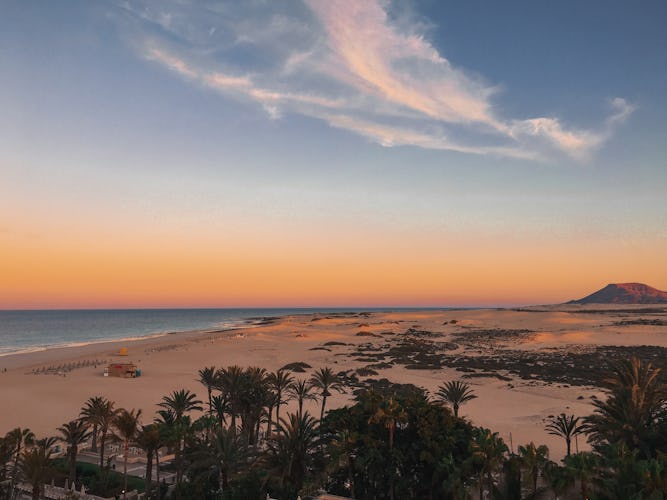
Fuerteventura lies just east of Gran Canaria and is the closest island in the archipelago to the African continent. The island boasts more than 340 kilometres of coastline housing magnificent white sand beaches, perfect for all kinds of water-based activities.
Windsurfing and scuba diving are among the most popular activities on the island.
The eastern coast is where you will find cliffs and hidden coves, perfect for scuba diving and exploring the rich underwater life.
Like the neighbouring island of Gran Canaria, Fuerteventura is the home of international windsurfing competitions with several spots like Corralejo, Cotillo or Cofete, where the conditions are ideal.
The island's interior is full of nature trails that will let you explore the unspoilt countryside. The most popular destinations are Tindaya Mountain and the Betancuria Nature Reserve.
The island's capital, Puerto del Rosario, is located on the eastern coast and has a very good connection with the rest of the archipelago via ferry lines and even a small airport.
Lanzarote
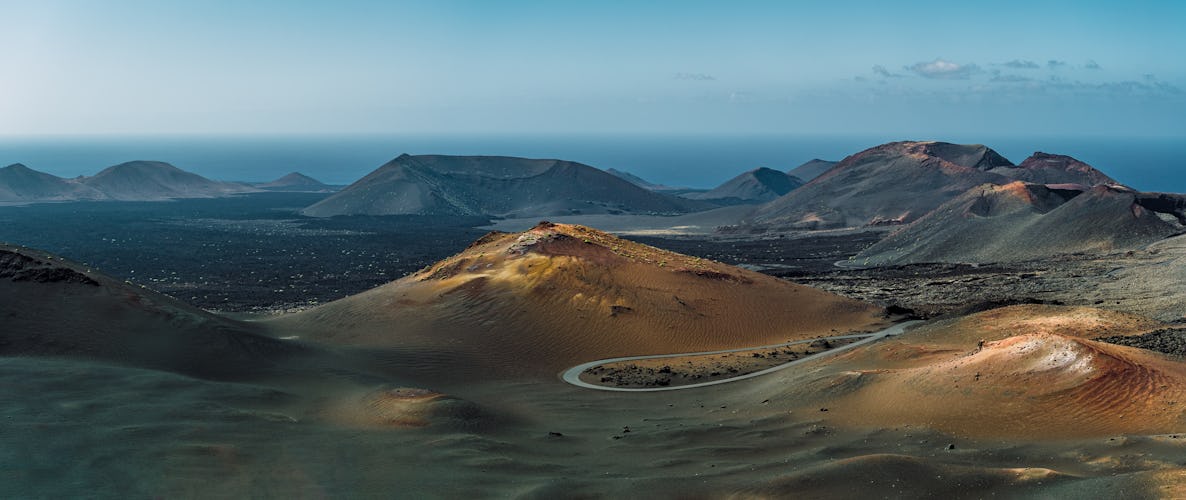
Lanzarote is one of the most visually stunning Canary Islands, where the unique colours of the volcanic landscapes contrast the blue shades of the Atlantic.
The whole island received the status of a biosphere reserve by UNESCO in 1993. The island's capital is the charming coastal town of Arrecife, which lies on the eastern coastline
Despite not having many trees, the island boasts lush vegetation, with all kinds of plants sprawling across the countryside.
The best place to experience this otherworldly landscape is by visiting the Timanfaya National Park, where you will find as many as 25 dormant volcano craters.
Compared to other bigger Canary islands, life is a bit more relaxed on Lanzarote. Traditional white houses amidst the volcanic landscape create a unique setting where you can visit local museums, explore the secluded coves and marvel at the art installations by the local artist Cesar Manrique. The whole island seems to be orientated towards the fusion of art and nature. The local lifestyle oozes creativity, manifested in numerous art galleries and charming towns like Teguise, full of artisan workshops.
In contrast to the rugged terrain on the northern shores, the southern coast is populated by unique beaches such as Famara and Papagayo, where you will find several seaside resorts and coastal villages.
La Palma
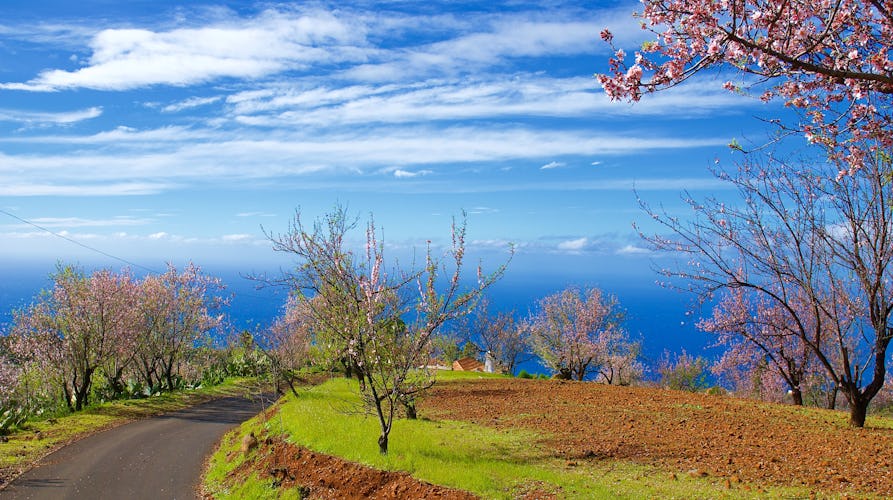
La Palma, also known as the "isla bonita" (beautiful island), is located in the northwestern corner of the archipelago and is the greenest of the Canary Islands.
Another declared UNESCO Biosphere Reserve, La Palma offers exceptional scenery with lush forests populating the interior and volcanic rocks dominating the coastline. The beaches on the island present stunning black sand, surrounded by volcanic cliffs. La Palma is home to numerous protected areas, including the Caldera de Taburiente National Park. As you venture into the interior of the island, you will be met by impressive mountain ranges, which includes Roque de Los Muchachos - home to the modern observatory with one of the most powerful telescopes in the world.
The best way to acquaint yourself with the history and culture of the island is by visiting the island's capital - Santa Cruz de la Palma. Here you will find numerous interesting monuments and archaeological sites, as well as a multitude of shrines, churches and museums.
La Palma nurtures its traditional values with several religious festivities like Descent of the Virgin of Las Nieves and Dance of the Dwarves taking place each year.
La Gomera
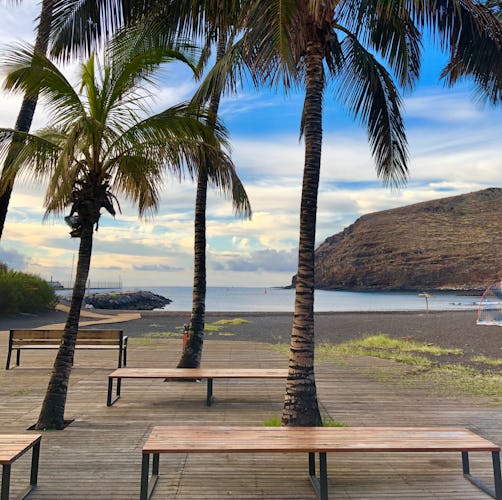
La Gomera, also known as "Isla Magica" (the magical island), sits just 20 kilometres west of Tenerife and is the second smallest of the Canary Islands.
This small island boasts a rugged coastline with small black-sand beaches nestled between cliffs. The interior is highly contrasted: here, you can go from palm-covered valleys to huge canyons to lush forests in just a few kilometres.
The best way to experience the beauty of La Gomera's interior is to visit the Garajonay National Park. This UNESCO World Heritage site is crisscrossed by tracks and trails that let you explore and examine its luscious vegetation.
Another unique thing about the island is the intriguing dialect used by the locals, called "el silbo" (the whistle). Developed by local shepherds and farmers many centuries ago, this communication system is based on syllables being whisted. The system was designed because of the rugged landscape and allowed simple messages to be sent across gorges, canyons and valleys.
The largest settlement and the island's capital is San Sebastian de La Gomera on the eastern coast. You will find an extensive and secure harbour here with direct ferry routes to Tenerife. There is also a small airport on the southern end with flights to Tenerife and Gran Canaria.
El Hierro
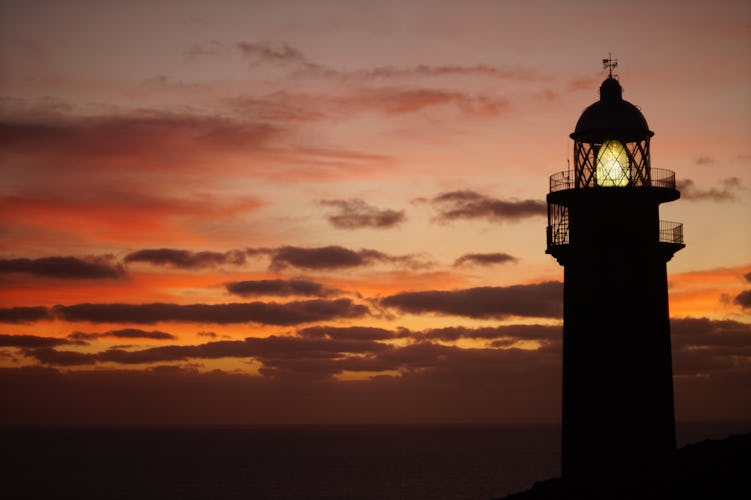
El Hierro, also known as "Isla del Meridiano" (the Meridian Island), is the southernmost of the Canary Islands. Even though this small island measures less than 50 kilometres from one end to the other, it is packed with stunning landscapes, ranging from protected woodland areas to impeccable natural swimming pools with crystal clear waters.
Yet another Canary island that boasts the UNESCO Biosphere Reserve designation, El Hierro is outstanding for its diversity. Ideal for enjoying the sea, the island offers almost 100 kilometres of rugged, cliff-lined coastline with the occasional coves and lagoons such as Charco Manso and Charco Azul.
Venturing to the interior, you will be met with fertile plains and pine woods, as well as mesmerising volcanic areas.
Here you will find the most significant concentration of volcanoes of any of the Canary Islands, with more than 800 volcanoes scattered across the island's surface. Thankfully, the recent volcanic and seismic activity is nonexistent.
This secluded and pristine island is the perfect place for an active vacation: clear and deep waters close to the coast make this island ideal for diving and snorkelling enthusiasts with several diving centres located here.
El Hierro is also an excellent place for other outdoor activities: paragliding, mountain biking, surfing, hiking are all possible thanks to the varied landscape.
Despite being further away, the island is very well connected with the rest of the archipelago. There is an airport just a few kilometres from the island's capital, Valverde, which offers daily flights to and from Tenerife and Gran Canaria. The island's principal port is in Puerto de la Estaca, with scheduled ferry services to and from Tenerife.
Don't worry about the weather
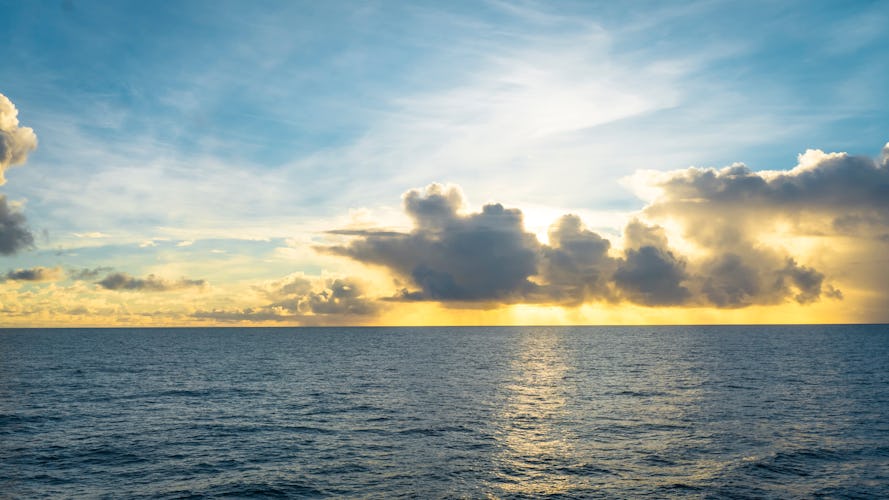
One of the most appealing aspects of this magical archipelago is its weather. The islands enjoy a subtropical climate with no significant fluctuations in temperatures or rainfall throughout the year.
For instance, in August, the average temperature in Gran Canaria, Las Palmas, is about 26 °C, while the average temperature in January drops only slightly to 21 °C. This makes visiting the Canary Islands enjoyable at any time of the year, especially in the winter.
The easternmost islands, Lanzarote and Fuerteventura, have slightly higher average temperatures as they are closer to the African continent.
Rainfall is sporadic in the Canaries and is mainly concentrated in November and December, making droughts widespread on the islands.
The prevailing winds on the Canaries are the northeast trade winds, similar to a typical sea breeze, blowing during the midday and in the afternoon, at around 20 knots.
The islands see plenty of sunny days throughout the year. However, clouds and fog can form in higher elevations on the bigger islands. The sun is stronger here, closer to the equator, so protective sunscreen is a must when visiting the islands.
Best time to visit
As mentioned before, there is no best or worst time to visit the Canary Islands. The subtropical climate maintains high temperatures year-round. This makes visiting during the winter especially appealing, where one can escape the snow and freezing temperatures with a relatively short flight. The only thing to avoid is visiting in late autumn when there is an increased probability of rain.
Carnival!
There is one more thing the Canary islands are unique and famous for - the Carnival!
The tradition dates back to the end of the 15th century when Spaniards colonised the area. As the islands became more populated, Italian travellers organised a small masked carnival in Las Palmas de Gran Canaria. From there, the festivities grew in size and spread to other islands.
Nowadays, the two cities of Santa Cruz de Tenerife and Las Palmas are at the epicentre of this spectacular and colourful event.
Each year, this festival grips the islands in January and February and attracts large crowds of masked dancers and performers. The city streets explode with stunning costumes, elaborate dance routines and catchy music.
This elaborate and majestic festival starts by electing the Carnival Queen among the thousands of stunning costumes. From there, a parade symbolising the beginning of the Carnival takes place. Then, hundreds of different groups showcase the fantastic costumes and ideas through the city streets over the next three days.
The festivities come to a climax on Carnival Tuesday with "el Coso", a spectacular parade celebrating all participants. This eccentric and colourful festival ends the next day with the Burial of the Sardine. The spirit of Carnival, symbolised by the sardine, is paraded through the streets on a funeral bier.
Let us help you plan the perfect sailing trip
Provide your travel details, receive free offer and enjoy your holiday!
